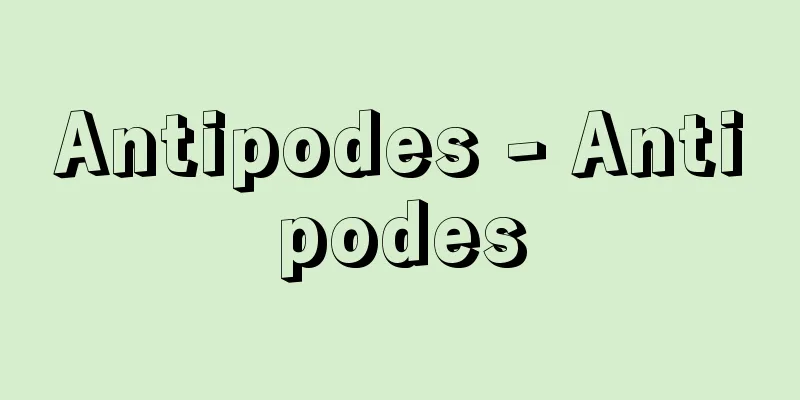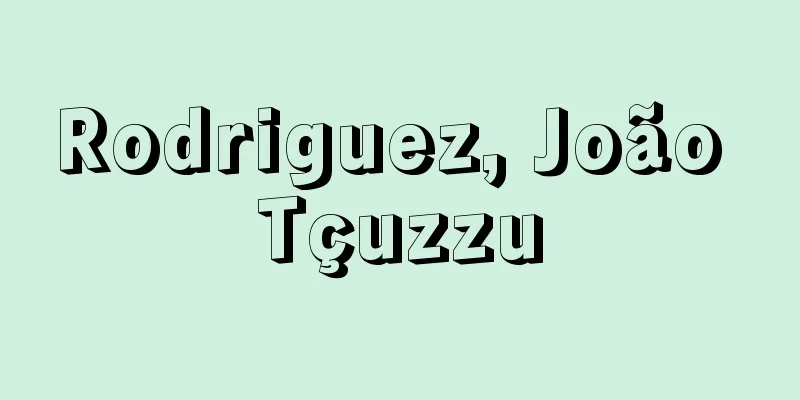Investment trust - Toushi Shintaku (English name) investment trust

|
A system in which funds from various investors, large and small, are collected into one fund, which is then invested by a professional manager in securities and real estate to make profits, and the resulting profits are distributed to investors according to the number of shares invested. Of course, if losses occur, they are borne by the investor, and there is no guarantee of a certain profit or principal. However, in order to spread the risk of losses and maintain as much safety as possible, the huge amount of funds collected are used to diversify investments into many investment targets. This is how investment trusts work, and their investment objective is solely profit making, not control of the issuing company. Such investment trusts began in the UK in the 1860s, and developed rapidly in the US in the 1920s. They were also seen in Japan before the Second World War, but they began to develop in earnest after the establishment of the Securities Investment Trust Law in 1951 (Showa 26) after the war. [Takeshi Goto] ClassificationThere are many different types of investment trusts. In order to classify them, it is important to first distinguish between (1) contract type or company type, and (2) closed-end type or open-end type. The classification of (1) is related to the method of establishment. First, a contract-type investment trust is established by three parties: the trustor (manager of the trust assets), the trustee (custodian of the trust assets), and the beneficiary (investor). The trustor enters into a trust contract with the trustee, and the trustee invests in securities and manages the trust assets as instructed by the trustor. The trustor issues equally divided beneficiary rights as beneficiary certificates and sells them to many investors (beneficiaries). In contrast, a company-type investment trust is one in which a joint stock company (investment corporation) is established for the purpose of investment, shares are sold to investors to raise funds, and profits are made by investing in securities and other items, and the profits are distributed to investors. The British investment trusts of the 1860s showed the original form of the contract-type, but the company-type also developed later. In the United States, the company-type is overwhelmingly more common. In contrast, Japan's Securities Investment Trust Law only stipulated contract-type trusts, but in 1998, the Securities Investment Trust Law was renamed the "Law Concerning Securities Investment Trusts and Securities Investment Corporations," and a system of corporate-type investment trusts was also introduced. In 2000, the law was amended to change the name to the "Law Concerning Investment Trusts and Investment Corporations." Next, classification (2) is related to the presence or absence of flexibility. Closed-end investment trusts do not, in principle, repurchase issued securities (beneficiary certificates in the case of contract-type investment trusts, stock certificates in the case of corporate-type investment trusts) and the resulting reduction of funds, while open-end investment trusts can do so at any time, or additional funds can be set up. In this case, repurchases are made based on the "unit price" calculated from the fund's net asset value. In contrast, closed-end types are redeemed through buying and selling in the market. Contract-type investment trusts are, in principle, open-end. However, corporate-type investment trusts can be of both types. However, even among open-end types, those that do not allow additional funds to be set up are called semi-open types, or also called unit types. In contrast, those that allow additional funds to be set up are called additional types or open types. Additional types are, in principle, unlimited, while unit types have a set trust period and are redeemed at maturity. [Takeshi Goto] Japanese Investment TrustsJapan's investment trusts are managed under the Investment Trust and Investment Corporation Law, and since the 1998 amendment, in addition to contract-type, company-type has also been issued. Contract-type includes unit-type and additional-type. Depending on the investment target securities, they are divided into stock investment trusts and public bond investment trusts, but there are various combinations such as convertible bond investment trusts, public bond stock funds, asset stock funds, and balanced funds. There are also foreign stock investment trusts that invest exclusively in foreign stocks, and international investment trusts that aim to diversify investments into domestic and foreign stocks. Public bond investment trusts include long-term public bond investment trusts that incorporate long-term public bonds, medium-term government bond funds that mainly target medium-term and short-term government bonds, and MMFs (money management funds) that incorporate short-term bonds and financial products and can be freely withdrawn at any time in units of 1 yen. In addition, due to the amendment of the law in 2000, real estate investment trusts that invest in real estate such as office buildings, commercial facilities, and apartments also appeared. This is a corporate type investment trust that is managed by an investment corporation. Real estate investment trusts are abbreviated as J-REITs and are listed on the stock exchange. As of the end of 2007, the total balance of stock investment trusts was 66.7 trillion yen, and that of public bond investment trusts was 12.9 trillion yen, of which 2.9 trillion yen was MMF. The investment trust management companies that set up and manage these investment trusts are not only securities companies, but also banks, investment advisory companies, insurance companies, and other entities, and the number of new entrants from Japan and overseas has rapidly increased, reaching 79 companies as of the end of May 2007. In addition, there are 46 management companies for real estate investment trusts. The Financial System Reform Act, which came into effect in December 1998, allowed financial institutions other than securities companies to sell these beneficiary certificates, and the number of companies entering the sales business has rapidly increased. [Takeshi Goto] "Guide to Real Estate Investment Corporations" and "Easy-to-Understand Guide to Investment Trusts" (2007, 2008) compiled and published by the Investment Trusts Association, Japan [Reference] | |Source: Shogakukan Encyclopedia Nipponica About Encyclopedia Nipponica Information | Legend |
|
大小さまざまな投資家の資金を集めて一つの基金とし、この基金を専門的な管理者が証券や不動産などに投資運用して利殖を図り、この結果得られた利益を出資口数に応じて投資家に配分するシステム。もちろん、損失が生じた場合はそれは投資家の負担となるのであって、一定の利益や元本を保証するものではない。しかし、損失発生のリスクを分散し、できるだけ安全を保持するため、その集められた巨額の資金力を利用して、多くの投資対象に分散投資が行われる。これが投資信託の仕組みであり、その投資目的はもっぱら利殖であって、株式発行会社の支配などではない。このような投資信託は、1860年代のイギリスで始められ、1920年代にはアメリカで飛躍的に発展した。日本にも第二次世界大戦前からそのはしりがみられたが、戦後の1951年(昭和26)に証券投資信託法が制定されたことにより、本格的発展をすることとなった。 [後藤 猛] 分類一口に投資信託といってもいろいろの型がある。これを分類するには、まず、(1)契約型か会社型か、(2)クローズド・エンド型かオープン・エンド型か、という区分が重要である。 (1)の分類は成立の方式にかかわるもので、まず、契約型投資信託は、委託者(信託財産の運用管理者)と受託者(信託財産の保管者)と受益者(投資家)の三当事者によって成立する。委託者は受託者と信託契約を結び、受託者は信託財産を委託者の指図どおりに証券投資をして運用するものとし、委託者はその受益権を均等に分割した受益証券にして発行し、それを多くの投資家(受益者)に売るわけである。これに対し会社型投資信託とは、投資を目的とする株式会社(投資法人)を設立し、その株式を投資家に売って基金を集め、証券などに投資して利殖を図り、利益を投資家に分配するものである。1860年代のイギリスの投資信託は契約型の原形を示すものであったが、その後、会社型も発展した。アメリカでは会社型が圧倒的に多い。これに対し日本の証券投資信託法は契約型のみを規定していたが、1998年(平成10)の法改正により、証券投資信託法は「証券投資信託及び証券投資法人に関する法律」となり、会社型投資信託の制度も導入された。また、2000年の法改正により「投資信託及び投資法人に関する法律」と改称された。 次に(2)の分類は伸縮性の有無にかかわるもので、クローズド・エンド型投資信託は、発行証券(契約型の場合の受益証券、会社型の場合の株券)の買戻しとこれによる基金の減少が原則として行われないものであり、オープン・エンド型投資信託は、それがいつでも行われ、あるいは追加設定も行われうるものである。この場合の買戻しは基金の純資産価格から算出される「基準価額」に基づいて行われる。これに対し、クローズド・エンド型の換金は市場で売買することとなる。契約型の投資信託は原則としてオープン・エンド型である。しかし、会社型なら両方の型がありうる。ただし、オープン・エンド型でも、追加設定をしない方式のものはセミ・オープン方式といわれ、単位型あるいはユニット型とも称される。これに対し、追加設定のできる方式のものは追加型あるいはオープン型と称される。追加型は無期限が原則であるが、単位型は一定の信託期間があり満期には償還される。 [後藤 猛] 日本の投資信託日本の投資信託は「投資信託及び投資法人に関する法律」によって運営されており、1998年の改正以降は契約型のほか、会社型も発行されている。契約型には単位型と追加型とがある。また、その運用対象証券を何に重点を置くかにより、株式投資信託と公社債投資信託に分かれるが、さらに、転換社債投資信託、公共債株式ファンド、資産株ファンド、バランス型ファンドなど、いろいろの組合せのものがあり、さらに、外国株専門に投資する外国株投資信託、国内株と外国株とへ分散投資をねらいとする国際投資信託などもある。また、公社債投資信託のなかには、長期の公社債を組み入れる長期公社債投資信託のほか、中期国債と中短期債を主要対象とする中期国債ファンド、短期債や金融商品などを組入れ対象とし、1円単位でいつでも出し入れ自由のMMF(マネー・マネジメント・ファンド)などがある。また、2000年の法律改正により、オフィスビルや商業施設、マンションなどの不動産に投資する不動産投資信託も出現した。これは会社型投資信託で投資法人によって運用されている。不動産投資信託はJリート(J‐REIT)と略称され、証券取引所にも上場されている。2007年末現在の株式投資信託の設定残高は66兆7000億円、公社債投資信託は12兆9000億円、そのうちの2兆9000億円はMMFであった。これら投資信託を設定運用する投資信託委託会社は、証券会社系のほかに、銀行系、投資顧問会社系、保険系などが、国内、海外から新規参入して急増し、2007年5月末現在で79社となっている。このほか、不動産投資信託の運用会社は46社ある。またその受益証券の販売は、1998年12月に施行された金融システム改革法によって、証券会社以外の金融機関にも認められたことにより、販売に参入する会社が急増している。 [後藤 猛] 『社団法人投資信託協会編・刊『不動産投資法人ガイド』『わかりやすい投資信託ガイド』(2007、2008)』 [参照項目] | |出典 小学館 日本大百科全書(ニッポニカ)日本大百科全書(ニッポニカ)について 情報 | 凡例 |
<<: Perspective drawing - Toushizu
>>: Toji Temple Execution Diary - Toji Temple Execution Diary
Recommend
Oonakatomi Morona - Oonakatomi Morona
Year of death: 21 February 16 (23 March 797) Year ...
Back shell - Back shell
In the architecture of shrines and temples, a deco...
Hematocele
... refers to a condition in which blood accumula...
voennyi sovet (English spelling) voennyisovet
...The local organizations of the Army and Navy P...
Kuza
A brand of bottled water. Hard water from France. ...
Maple
Another name for the Japanese maple, a representat...
Ayameya Heiji - Ayameya Heiji
...It is said that around the Genroku period (168...
imitative counterpoint
...At that time, the three-part system of soprano...
Gyotoku salt fields
During the Edo period, Irihama salt fields were lo...
Ibn Gabirol
A Jewish poet and philosopher born in Malaga, Anda...
Gemini (the twins)
Its abbreviation is Gem. It is one of the zodiacal...
Mr. Masato Okinaga - The Doctor of the Okinaga Nyu
…In the Shinsen Shojiroku, Okinaga Masato is list...
Gibbaeum
... Bergeranthus is a small, colonial plant with ...
Leonid Il'ich Brezhnev
Soviet politician. Born December 19 in Kamenskoye...
Papaver alpinum (English name)
…[Masao Yamashita]. … *Some of the terminology th...









